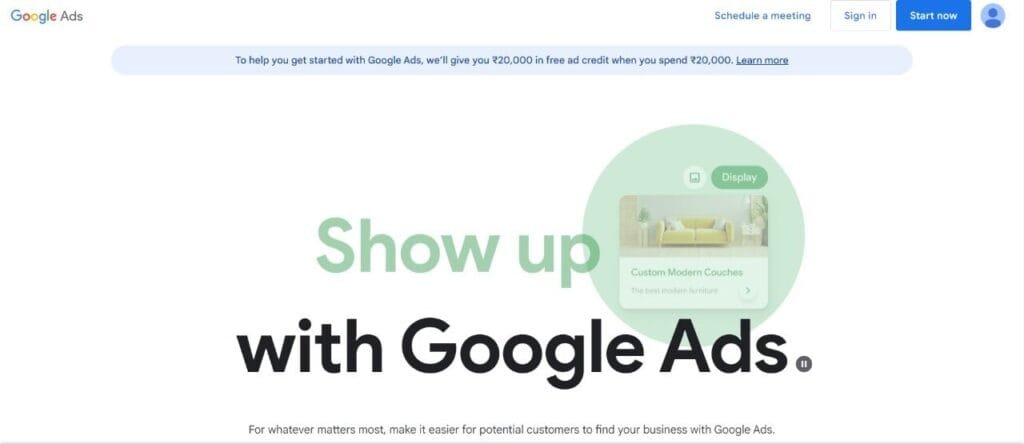This Article has been revised, edited and added to, by Poulomi Chakraborty.
In the ever-expanding universe of digital content, YouTube emerges as a galaxy where stars are born every minute. For startups, this platform offers an unprecedented avenue to reach, engage, and captivate a global audience. However, amidst millions of videos, how does a startup’s content not just reach the audience but resonate, engage, and convert? The secret lies in mastering the art and science of keyword research tailored for YouTube – a world where video SEO is the linchpin of visibility and engagement.
Imagine a startup embarking on its YouTube journey. Each video is a narrative, a story told through visuals, audio, and text. But for this story to reach its intended audience, to echo amidst the noise, and to resonate amidst the diversity, it needs to be discoverable. Here, keyword research steps in as the silent yet potent force, making each video not just a piece of content but a destination where the audience’s searches, queries, and aspirations find their answers.
In this elaborate journey, we will unfold the intricate layers of keyword research for a startup YouTube channel. From understanding the YouTube algorithm, exploring tools and techniques for keyword discovery, to integrating keywords into video content, descriptions, and tags – every facet will be unveiled. Ready to transform your startup’s YouTube channel into a hub where content and audience meet, engage, and embark on a journey together? Let’s dive in.
Decoding the YouTube Algorithm

Welcome to the deep dive into YouTube’s algorithm—a crucial piece for any startup looking to leverage video content effectively. To really grasp how the YouTube algorithm works, think of it as a matchmaker.
Its primary job is to pair viewers with videos they’re most likely to watch and enjoy. But how does it do this? Primarily through signals and metrics that gauge content relevance and viewer satisfaction.
Firstly, the algorithm considers watch time and engagement as significant indicators of video quality. Watch time isn’t just about how long your video is but more about how long people stay watching it.
Engagement, on the other hand, includes likes, comments, and shares. It’s a signal to YouTube that viewers find your content valuable, prompting the algorithm to recommend it to similar audiences.
Another key factor is click-through rate (CTR), which measures how often viewers click on your video after seeing the thumbnail and title. A high CTR indicates that your video is appealing and is likely what the audience wants to see. Therefore, crafting compelling titles and thumbnails is not just a creative exercise; it’s a strategic one.
Leveraging SEO for Better Discoverability
To make your startup’s videos more discoverable, integrating Search Engine Optimization (SEO) strategies with an understanding of YouTube’s search and discovery system is critical. Remember, YouTube is the second largest search engine. Here’s how to optimize for it:
Start by performing keyword research specific to YouTube. Tools like Google’s Keyword Planner, Ahrefs, and TubeBuddy can help you find terms that potential viewers are searching for.
Once you’ve identified your keywords, incorporate them strategically in your video’s title, description, and tags. This approach helps the algorithm understand your content’s context and relevance to specific queries, boosting your chances of appearing in search results.
Another strategy is to optimize your video metadata. This includes not only keywords but also your description’s first few lines, which can appear in search results as part of the video snippet. Make these lines count by clearly stating what the video is about and weaving in your primary keywords.
Enhancing Viewer Experience to Boost Ranking
To charm the algorithm further, focus on the viewer’s experience. YouTube prioritizes content that satisfies user queries and keeps them on the platform longer. Here are several approaches to enhance engagement:
- Create compelling content: It sounds obvious, but the core of your strategy should always revolve around high-quality, engaging content. Address problems, answer questions, or entertain your audience in a way that resonates with them. Your content should serve the interests of your target audience, increasing the likelihood of prolonged watch times and interactions.
- Encourage viewer interaction: Ask viewers to engage with your content through likes, comments, and shares. Engagement is a strong signal to YouTube that your content is valuable. Plus, it opens up avenues for community building and repeat viewership, which are essential for a growing channel.
- Use end screens and cards strategically: These features can guide viewers to other videos, playlists, or external websites and keep them engaged with your channel. By directing them to your other content, you maintain their interest and boost your channel’s overall watch time.
- Analyze and adapt: YouTube Studio offers a wealth of analytics that can help you understand what’s working and what isn’t. Pay attention to metrics like drop-off points in your videos, the demographics of your viewers, and how different videos perform. Use this data to refine your content strategy and make more informed decisions that align with what your audience wants.
By focusing on these strategies, startups can harness the power of YouTube’s algorithm to their advantage, ensuring that their content not only reaches but also resonates with their intended audience. Remember, the key to YouTube success lies in understanding and adapting to both viewer behavior and the platform’s evolving algorithms.
Tools of the Trade

For any YouTube channel, especially a startup aiming to capture attention in a crowded market, the right tools can make a significant difference. Keyword research tools specifically designed for YouTube can provide insights into what your potential audience is searching for, how big the audience for a particular topic is, and how you can tailor your content to meet that demand.
TubeBuddy and vidIQ are two standout options. Both integrate directly with your YouTube channel to offer real-time suggestions on keywords, tags, and optimization strategies.
They also provide detailed analytics on your channel’s performance, helping you understand which content resonates with viewers and why. These tools not only aid in discovering high-volume keywords but also help track your video’s ranking for specific terms.
Google Trends is another invaluable resource. While not exclusive to YouTube, it allows you to see the popularity of specific search terms over time across various regions and languages. This can be particularly useful for timing your content around peak interest times or understanding if a topic is becoming more or less popular.
Optimizing with Video Editing Software
Once you have your strategy down, the next essential toolset revolves around creating and editing your videos. Quality content requires quality production, and for that, robust video editing software is necessary.
Adobe Premiere Pro and Final Cut Pro are industry standards that offer extensive features and flexibility but come with a steeper learning curve and higher price tag. For startups looking for more budget-friendly and user-friendly options, Camtasia and Filmora offer a good balance between functionality and ease of use, providing all the necessary tools to create professional-looking videos without prior extensive video editing experience.
Enhancing Engagement with Graphics and Thumbnails
Visual appeal can significantly affect click-through rates, making graphic design tools crucial for creating eye-catching thumbnails and visuals. Canva and Adobe Spark are user-friendly applications that provide templates specifically designed for YouTube thumbnails.
These tools make it easy to incorporate elements like text overlays, icons, and branding, which can help your videos stand out in a sea of content.
Analyzing Performance with Analytics Tools
Understanding how your content performs and how viewers interact with your videos is key to refining your strategy and achieving better results. YouTube Analytics is a powerful built-in tool that offers a wealth of data, from viewer demographics to engagement metrics.
It helps you pinpoint what works and what doesn’t by showing you where viewers drop off, how they find your videos, and how often they engage with your content.
For a deeper dive into analytics, Social Blade and ChannelMeter provide more detailed analyses and benchmarking against other channels and content creators. These tools can give startups a broader perspective on their channel’s performance in the context of similar content on YouTube.
Arming yourself with these tools can significantly impact your startup’s YouTube channel’s ability to attract and engage an audience. By efficiently utilizing keyword research tools, video editing software, graphic design tools, and analytics platforms, you are better equipped to produce content that is not only high in quality but also optimized for discovery and viewer retention.
As with any strategy, the key is to continually learn from your experiences, adapt to new insights, and leverage these tools to refine and enhance your video content strategy.
Crafting SEO-Infused Content
SEO for YouTube isn’t just about injecting relevant keywords into your video titles and descriptions—it’s about creating content that is fundamentally engaging while also being optimized for search engines. This dual focus requires a deep understanding of your audience, the algorithm, and the specific elements that contribute to increased visibility and viewer retention.
Developing a Content Strategy That Resonates and Ranks
The foundation of any successful YouTube channel is a content strategy that resonates with its audience. This starts with identifying your niche and understanding the problems, interests, and preferences of your viewers. Every piece of content should aim to add value, whether through solving problems, providing unique insights, or entertaining in a way that no one else does.
Once your strategy is clear, integrate SEO seamlessly into your content creation process:
Topic and Keyword Alignment: Before you even start filming, your video content should align with both your audience’s interests and the keywords they are likely to search for. Use the tools mentioned earlier to research keywords that are not only popular but also relevant to your content. This alignment ensures that your videos meet actual search demands.
Title Optimization: Your video’s title is the first impression viewers have of your content. Make it count by including the primary keyword towards the beginning of the title to emphasize relevance. However, ensure the title is still engaging and gives viewers a clear reason to click. It should promise value, evoke curiosity, or offer a solution to a specific problem.
Crafting Compelling Descriptions: Your video description should offer a detailed overview of the video’s content, including secondary keywords naturally integrated into the text. The first couple of lines are crucial because they appear in search results and can influence whether someone clicks on your video. Use this space to hook viewers with a concise summary that highlights the value of your video.
Engaging Content Creation: The Heart of SEO
Beyond the technical aspects of SEO, the content itself needs to be engaging. Here’s how to ensure your videos not only rank well but also captivate your audience:
High-Quality Video Production: Even the best-optimized video can fall flat if the production quality is poor. Invest in good lighting, clear audio, and high-definition video. A well-produced video can improve engagement and reduce the drop-off rate, which are critical metrics for the YouTube algorithm.
Storytelling Techniques: Use storytelling to make your videos more engaging. A well-told story can captivate an audience right from the start and keep them watching longer. Structure your videos with a clear beginning, middle, and end, and make sure each part keeps viewers wanting more.
Call to Action: Encourage viewers to interact with your content. Ask them to like, comment, and share if they found the video useful. Engaging with viewers can lead to higher retention rates as the algorithm sees that viewers are interacting with your content.
Consistency and Frequency: YouTube favors channels that upload regularly. Set a realistic upload schedule that allows for the production of high-quality content. Consistency keeps your channel fresh and gives people a reason to subscribe and return.
Crafting SEO-infused content on YouTube requires a balance between creativity and strategic optimization. By understanding and implementing these principles, startups can effectively increase their visibility on YouTube. Engaging, well-produced content that is also optimized for search will not only attract but also retain a dedicated viewership, fostering growth and enhancing brand visibility online.
Engagement Metrics that Matter

Understanding which metrics are most indicative of your YouTube channel’s success is crucial for any startup looking to refine its content strategy and enhance viewer engagement. While many metrics are available, focusing on those that directly reflect viewer behavior and the value of your content can provide actionable insights and help drive strategic decisions.
Watch Time: The King of Metrics
Watch Time is arguably the most critical metric for YouTube success. It measures the total amount of time viewers have spent watching your videos. This metric is a significant factor in the YouTube algorithm’s ranking decisions because it directly reflects how engaging and valuable viewers find your content.
A higher watch time not only improves your channel’s visibility in search results and recommendations but also indicates that your content is compelling enough to keep viewers watching.
Audience Retention: Keeping Viewers Hooked
Audience Retention shows you what percentage of your videos viewers watch and when they stop watching. This metric is invaluable because it helps you identify specific segments where you might be losing your audience’s interest.
High retention rates are a positive indicator to YouTube that your video is engaging and meets viewer expectations, which can boost your video’s ranking. Use this data to tweak your video structure, pacing, and content to better maintain viewer interest.
Engagement Rate: Interaction Beyond Viewing
Engagement Rate encompasses likes, comments, shares, and subscriptions that result from viewing your videos. This metric is crucial because it indicates an active viewer interaction with your content.
A high engagement rate often correlates with higher rankings in YouTube search results because it signals to the algorithm that viewers find your content valuable enough to interact with it. Encouraging viewers to engage with your content through calls to action can significantly enhance this metric.
Click-Through Rate (CTR): Capturing Viewer Interest
Click-Through Rate (CTR) measures how often viewers click on your video after seeing the thumbnail and title in their feed. This metric is vital for assessing how well your video stands out amongst other content and gauges the effectiveness of your thumbnails and titles.
A low CTR might indicate that your thumbnails and titles are not compelling enough to draw in viewers, or they may be misleading. Optimizing these elements based on CTR can lead to better initial engagement.
Subscriber Growth: Building Your Community
Subscriber Growth tracks how many viewers subscribe to your channel after watching your videos. Subscribers are likely to be your most loyal viewers, as they have opted in to see more content from you. This metric is a good indicator of your channel’s long-term potential and viewer loyalty.
Rapid subscriber growth following new content uploads can indicate that your videos are hitting the mark with your target audience.
These metrics offer direct insight into how viewers are interacting with your videos and what you might do to improve their experience. For startups, leveraging this data effectively means better targeting, enhanced content quality, and ultimately, a more successful YouTube channel.
Regularly review these metrics, set realistic improvement goals based on your findings, and adapt your content strategy to meet the evolving needs and interests of your audience. By focusing on these engagement metrics, you can ensure that your channel not only attracts viewers but also builds a sustained and engaged community.

Related: Check out our free SEO suite

Enhancing Visibility with SEO-Optimized Thumbnails
When browsing YouTube, thumbnails serve as the primary visual decision point for viewers. A well-designed thumbnail not only captures attention but also conveys a clear, compelling message about the content of your video. This makes thumbnails a vital component in your YouTube SEO strategy. They directly influence Click-Through Rates (CTR), and by extension, affect how well your videos are promoted by YouTube’s algorithms.
Crafting Thumbnails That Stand Out
Creating a thumbnail that stands out in a sea of content involves more than just aesthetic appeal—it must be strategically designed to attract and inform potential viewers. Here’s how you can create SEO-optimized thumbnails:
Use High-Contrast Colors: Bright, contrasting colors catch the eye more effectively than muted tones, especially on mobile devices where most YouTube browsing occurs. Using a color palette that stands out against YouTube’s white background and doesn’t blend in with the typical blue and white of most social platforms can make a significant difference.
Incorporate Text Sparingly: While it’s important to use some text to convey the essence of your video, too much can overwhelm the viewer and clutter the image. Choose short, impactful phrases that enhance the message of your video and complement the visual elements without covering them. Make sure the text is large enough to be readable on all devices.
Feature Key Visuals: Include an image that represents the core topic or theme of your video. This could be an expressive facial close-up if your channel is personality-driven, a striking product shot for reviews, or an intriguing scene for narrative content. The image should pique curiosity and make the viewer want to learn more.
Maintain Brand Consistency: Each thumbnail should be clearly recognizable as part of your channel’s brand. Consistent use of logos, color schemes, and font types helps build a recognizable brand identity that viewers will come to trust and seek out.
SEO Considerations for Thumbnails
Relevance and Accuracy: The thumbnail must accurately reflect the content of your video. Misleading thumbnails can lead to high initial clicks but poor audience retention and negative feedback, which harm your channel’s ranking. Ensure that your thumbnail, while eye-catching, is also a true representation of what viewers can expect.
Optimization for All Devices: Thumbnails need to be clearly visible and effective across all devices, from large desktop monitors to small smartphone screens. This means optimizing image resolution and composition to ensure that key elements are visible even on smaller screens.
Testing and Iteration: Like any other element of your content strategy, thumbnails should be tested and optimized based on performance. Use A/B testing tools available through YouTube or third-party services to try out different thumbnail designs and determine which ones achieve the highest CTR.
Thumbnails are your first opportunity to attract viewers as they scroll through their feeds. An SEO-optimized thumbnail not only boosts your visibility but also contributes significantly to the viewer’s decision to watch your video.
By combining strong visual design with strategic SEO practices, you can dramatically increase the effectiveness of your thumbnails, thereby improving your overall channel performance and viewer engagement. In the competitive world of YouTube content, a well-crafted thumbnail is not just a nice-to-have—it’s an essential part of your video marketing strategy.
The Power of Playlists

Playlists are a powerful tool on YouTube for several reasons. They not only help organize your content into easily navigable categories but also increase watch time by seamlessly guiding viewers from one video to the next. This automated continuity keeps viewers engaged with your content longer, which signals to YouTube’s algorithm that your channel is producing valuable content, thus boosting your videos’ visibility in search results and recommendations.
Creating Effective Playlists
The key to harnessing the power of playlists lies in thoughtful curation and strategic organization:
Thematic Grouping: Organize your videos into playlists based on common themes, topics, or series. This not only improves the user experience by making your channel more navigable but also groups content in a way that encourages prolonged viewing. For example, a startup channel might have separate playlists for “Product Demos,” “User Testimonials,” “How-To Guides,” and “Thought Leadership Interviews.”
Sequential Ordering: If your content follows a logical sequence or is part of a series, ordering your playlists accordingly can guide viewers through your content in a way that makes sense. This is particularly effective for educational or instructional content, where each video builds on the knowledge of the previous one.
Regular Updates: Continually update your playlists with new content to keep them fresh and relevant. Adding new videos to playlists can also give older content a new burst of life, reintroducing it to viewers who might have missed it the first time around.
SEO Benefits of Playlists
Playlists can also significantly enhance your SEO efforts on YouTube:
Keyword Optimization: Just like individual videos, playlists can be optimized for search by incorporating relevant keywords into the playlist title and description. This can make your playlists searchable and more likely to appear in search results, attracting more viewers to your channel.
Increased Discoverability: Playlists can appear in search results and in the suggested video columns alongside individual videos. By creating well-optimized playlists, you can increase the number of entry points to your content, thus improving overall visibility.
Engagement Metrics: Playlists encourage viewers to watch more than one video at a time, which can greatly increase overall watch time and engagement metrics. These are key factors that YouTube’s algorithm considers when ranking content, so higher engagement can lead to better overall channel performance.
Utilizing Playlists for Viewer Retention
Binge-Worthy Content: In the age of binge-watching, playlists can make your YouTube channel akin to a binge-worthy series. When videos play consecutively, viewers are less likely to switch to another channel, increasing your watch time exponentially.
End Screens and Cards: Use end screens and cards to promote your playlists. Directing viewers to a playlist instead of a single video can keep them engaged with your content for longer periods. This strategy is particularly effective at the end of videos, where you can capitalize on the viewer’s interest to keep them watching your content.
Playlists are an underutilized tool that can transform how viewers interact with your channel and how your content performs on YouTube. By strategically creating and maintaining playlists, you can not only improve the organizational structure of your channel but also enhance viewer engagement, increase your content’s discoverability, and ultimately boost your channel’s SEO performance. For startups looking to grow their YouTube presence, mastering the art of the playlist is an essential strategy.
Diving into Video SEO Analytics

In the digital landscape, analytics serve as the compass guiding your YouTube strategy. Understanding video SEO analytics is crucial for optimizing your content and making informed decisions that enhance visibility and engagement. By analyzing the right metrics, you can uncover deep insights into what works, what doesn’t, and how to improve your content strategy over time.
Key Metrics for In-depth Analysis
To truly harness the power of video SEO analytics, focus on a comprehensive set of metrics that provide a holistic view of your channel’s performance:
View Duration: Often confused with watch time, view duration measures the average amount of time viewers spend watching each video. This metric can help you pinpoint exactly where viewers lose interest, allowing you to adjust the content or editing style to maintain engagement.
Traffic Sources: Understanding where your views are coming from—be it YouTube search, suggested videos, external sites, or other sources—allows you to tailor your SEO strategies accordingly. For instance, if a significant portion of traffic comes from external websites, it might be beneficial to increase outreach or collaborations.
Demographics: Viewer demographics including age, gender, location, and device type can inform content customization and optimization strategies. Knowing your audience helps tailor your content to match their preferences, potentially increasing engagement and satisfaction.
Subscriber Behavior: Analyzing how different videos influence subscriber rates can provide insights into what content convinces viewers to commit to your channel. This can guide future content development focused on converting viewers to subscribers.
Tools for Tracking and Analyzing SEO Performance
Leverage advanced tools to dive deeper into analytics and gain more precise insights:
YouTube Analytics: Start with YouTube’s built-in analytics for a baseline understanding of your channel’s performance. It provides comprehensive data on engagement, watch time, viewer demographics, and more.
Google Analytics: For more advanced tracking, integrate Google Analytics with your YouTube channel. This allows you to track viewer behaviors across your entire digital presence, including how they interact with your website and other content after watching your videos.
Vidooly: This tool provides advanced video analytics that go beyond YouTube’s offerings, including detailed performance reports, audience insights, and competitive analysis. Vidooly can help you understand broader trends in viewer behavior and benchmark against competitors.
Applying Insights to Optimize Content
Use the insights gained from analytics to make targeted improvements to your content and SEO strategies:
Content Adjustments: If analytics show that videos with certain topics or styles have higher engagement, consider producing more content with those elements. Conversely, identify any common factors in videos that perform poorly and adjust or avoid these features.
SEO Tweaks: Refine your SEO tactics based on which keywords and video formats yield the best engagement and visibility. Experiment with different descriptions, tags, and titles to see what impacts rankings and CTR the most.
Engagement Strategies: Develop new ways to boost viewer interaction based on engagement analytics. For instance, if end screens with playlist links increase viewer retention, incorporate them more consistently across your videos.
Diving deep into video SEO analytics is not just about understanding what’s happening on your channel—it’s about actively using that knowledge to drive better results. By consistently measuring and applying insights from your video analytics, you can enhance your content’s effectiveness, improve SEO, and build a more engaged audience. For startups, this means not only growing your viewer base but also establishing a solid foundation for long-term YouTube success.
Conclusion
Embarking on a journey through the intricate pathways of YouTube SEO, we’ve unravelled the nuanced tapestry where creativity, strategy, and technology intersect. For startups venturing into the dynamic realm of YouTube, each video is more than content; it’s a narrative, a dialogue, a connection that is fostered and enriched through meticulous keyword research and SEO optimization.
The role of analytics emerged as pivotal, a compass that guides the continual refinement of SEO strategies, ensuring that the startup’s YouTube channel is not static but dynamic, evolving, and resonant. In the future landscape painted with the strokes of AI and machine learning, YouTube SEO is set to become more personalized, predictive, and potent, unveiling unprecedented opportunities for startups to connect, engage, and convert.
As we conclude this exploration, the takeaway for startups is profound yet simple. In the YouTube universe, visibility and engagement are crafted. They are the outcomes of a meticulous, strategic, and dynamic approach to SEO, where keywords are not just integrated but lived, each video is not just watched but experienced, and the YouTube channel is not just a platform but a destination.
Read Next
- Invest on the Go: SEO for Promoting Investment Apps
- Fintech Revolution: SEO for Startups in Digital Finance
- Retire in Comfort: SEO for Planning Your Retirement Income
- Forex Fortunes: SEO Strategies for Targeting Forex Traders
- Property Moguls in the Making: SEO for Real Estate Investment






















Comments are closed.